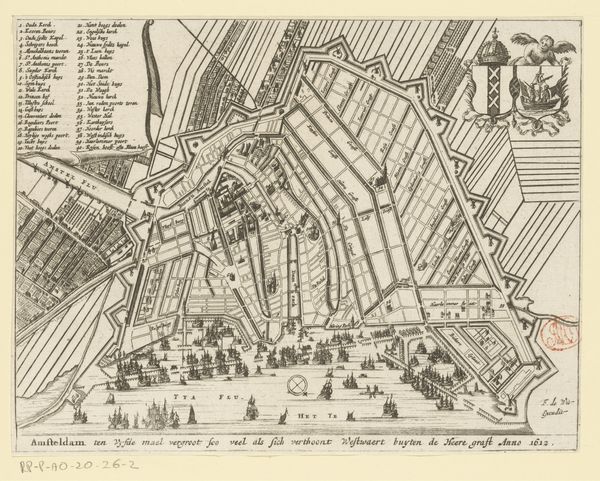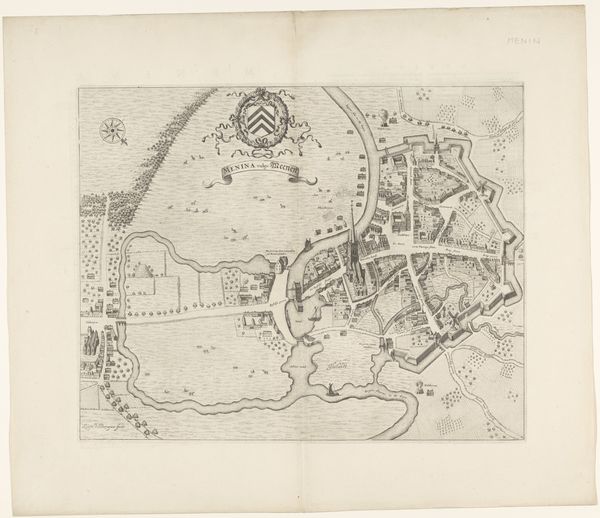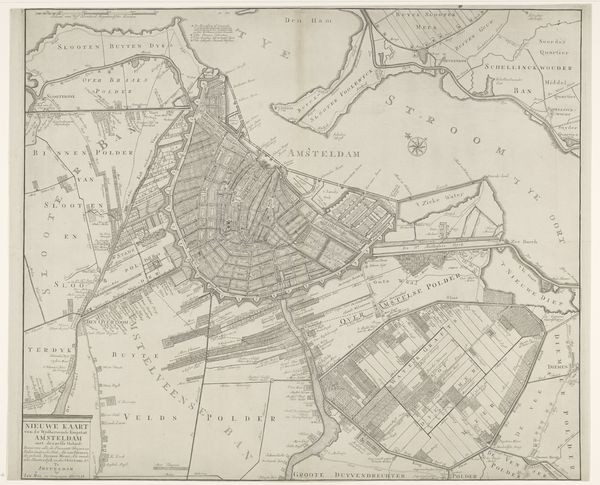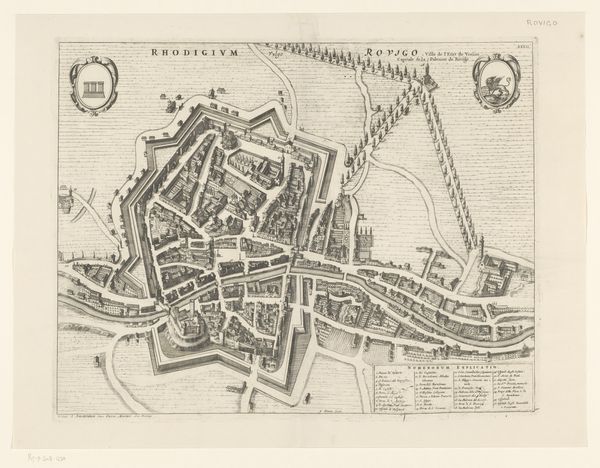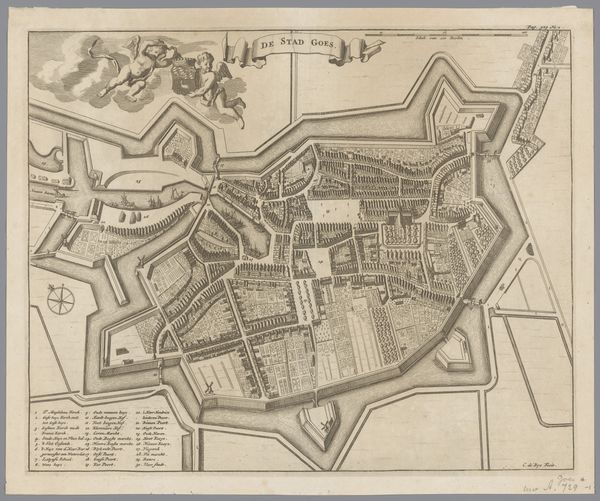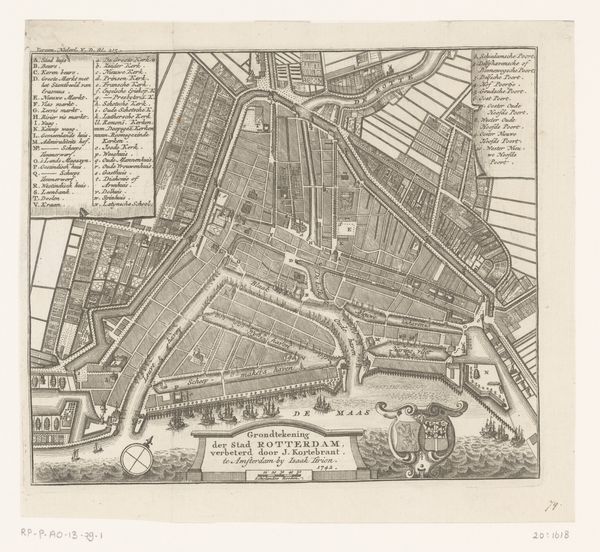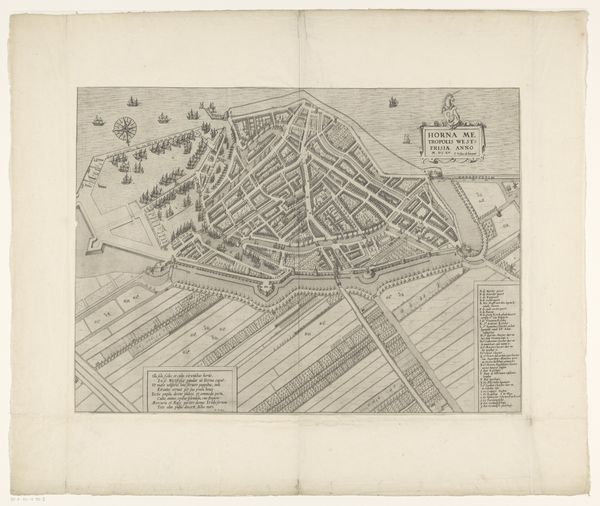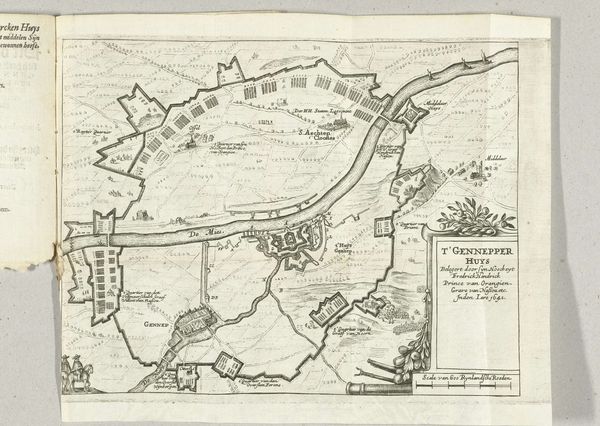
drawing, ink, engraving
#
pen and ink
#
drawing
#
baroque
#
mechanical pen drawing
#
pen illustration
#
pen sketch
#
old engraving style
#
landscape
#
personal sketchbook
#
linework heavy
#
ink
#
pen-ink sketch
#
pen work
#
cityscape
#
storyboard and sketchbook work
#
engraving
Dimensions: height 339 mm, width 387 mm
Copyright: Rijks Museum: Open Domain
This print, made in 1647 by an anonymous artist, depicts the siege of Armentières. It was made by engraving, a printmaking process where lines are incised into a metal plate, which is then inked and pressed onto paper. The fineness of the lines, and the detail they describe, speaks to the skill of the printmaker. But let’s also consider the social context in which this print was made. Engravings like this played a vital role in early modern Europe, helping to disseminate information about current events. This wasn't just about art; it was about communication, and the rapidly expanding culture of print media. The very act of distributing these images, mass producing them, speaks to the rise of a capitalist economy, where information itself becomes a commodity. The map is evidence of labor and the printing press, both of which served a growing, information-hungry public. Recognizing the economic forces at play allows us to understand this historical print more deeply, beyond aesthetics.
Comments
No comments
Be the first to comment and join the conversation on the ultimate creative platform.



